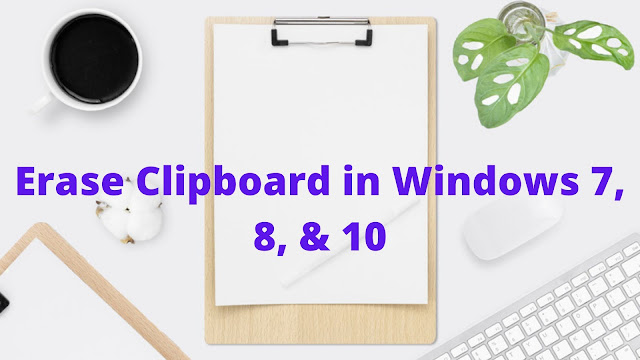How to Clear Clipboard in Windows 7, 8, & 10
In the realm of computing, the clipboard plays a crucial role as a temporary storage space for copied or cut data. However, an unchecked clipboard can lead to clutter and potential privacy concerns. This guide will walk you through the steps of clearing the clipboard in Windows, providing you with a cleaner digital workspace and contributing to a more efficient computing experience.
Understanding the Clipboard
1. What is the Clipboard?
The clipboard is a temporary storage area in Windows that holds data cut or copied from a document or file. This data can include text, images, or other types of information.
2. Why Clear the Clipboard?
Clearing the clipboard is essential for several reasons:
Privacy: Sensitive information may be stored in the clipboard, posing a security risk if left unattended.
Clutter Reduction: Regularly clearing the clipboard prevents it from becoming a jumble of outdated or unnecessary data, streamlining your computing experience.
Clearing Clipboard in Windows
1. Using Command Prompt
Step 1: Open the Start menu, type "cmd" or "Command Prompt" in the search bar.
Step 2: Right-click on "Command Prompt" and select "Run as administrator" to open Command Prompt with elevated privileges.
Step 3: In the Command Prompt window, type the following command and press Enter:
echo off | clip
This command sets the clipboard content to be empty.
Step 4: Close the Command Prompt.
2. Using PowerShell
Step 1: Open the Start menu, type "PowerShell" in the search bar.
Step 2: Right-click on "Windows PowerShell" and select "Run as administrator" to open PowerShell with elevated privileges.
Step 3: In the PowerShell window, type the following command and press Enter:
Set-Clipboard -Value $null
This command sets the clipboard content to be empty.
Step 4: Close the PowerShell.
3. Using Run Command
Step 1: Press
Win + Rto open the Run dialog.Step 2: Type "cmd" and press Enter to open Command Prompt.
Step 3: In the Command Prompt window, type the following command and press Enter:
echo off | clip
This command sets the clipboard content to be empty.
Step 4: Close the Command Prompt.
Creating a Shortcut for Clipboard Clearing
1. Desktop Shortcut
Step 1: Right-click on the desktop and select "New" > "Shortcut."
Step 2: In the location field, enter the following command:
cmd.exe /c echo off | clip
Step 3: Click "Next," provide a name for the shortcut, and click "Finish."
Step 4: Whenever you want to clear the clipboard, double-click the shortcut.
2. Keyboard Shortcut
Step 1: Right-click on the desktop and select "New" > "Shortcut."
Step 2: In the location field, enter the following command:
powershell.exe -command Set-Clipboard -Value $null
Step 3: Click "Next," provide a name for the shortcut, and click "Finish."
Step 4: Right-click the shortcut, select "Properties," and assign a keyboard shortcut in the "Shortcut key" field.
Step 5: Press the assigned keyboard shortcut whenever you want to clear the clipboard.
Additional Tips for Clipboard Management
1. Use Clipboard Managers
Consider using third-party clipboard manager applications that provide advanced features, such as history tracking, organization, and the ability to pin frequently used items.
2. Regularly Check Clipboard Content
Make it a habit to check the contents of your clipboard regularly. This ensures that sensitive or confidential information doesn't linger in the clipboard.
3. Log Out or Restart
Logging out of your Windows account or restarting your computer clears the clipboard as part of the system's normal processes.
Conclusion
Clearing the clipboard in Windows is a simple yet impactful practice that contributes to a clutter-free and more secure computing environment. By following the steps outlined in this guide, you can easily clear the clipboard using Command Prompt, PowerShell, or create shortcuts for quick access. Incorporate these practices into your computing routine to maintain a streamlined workspace and prioritize your privacy. Say goodbye to clipboard clutter and hello to a more efficient digital experience!













No comments:
Post a Comment